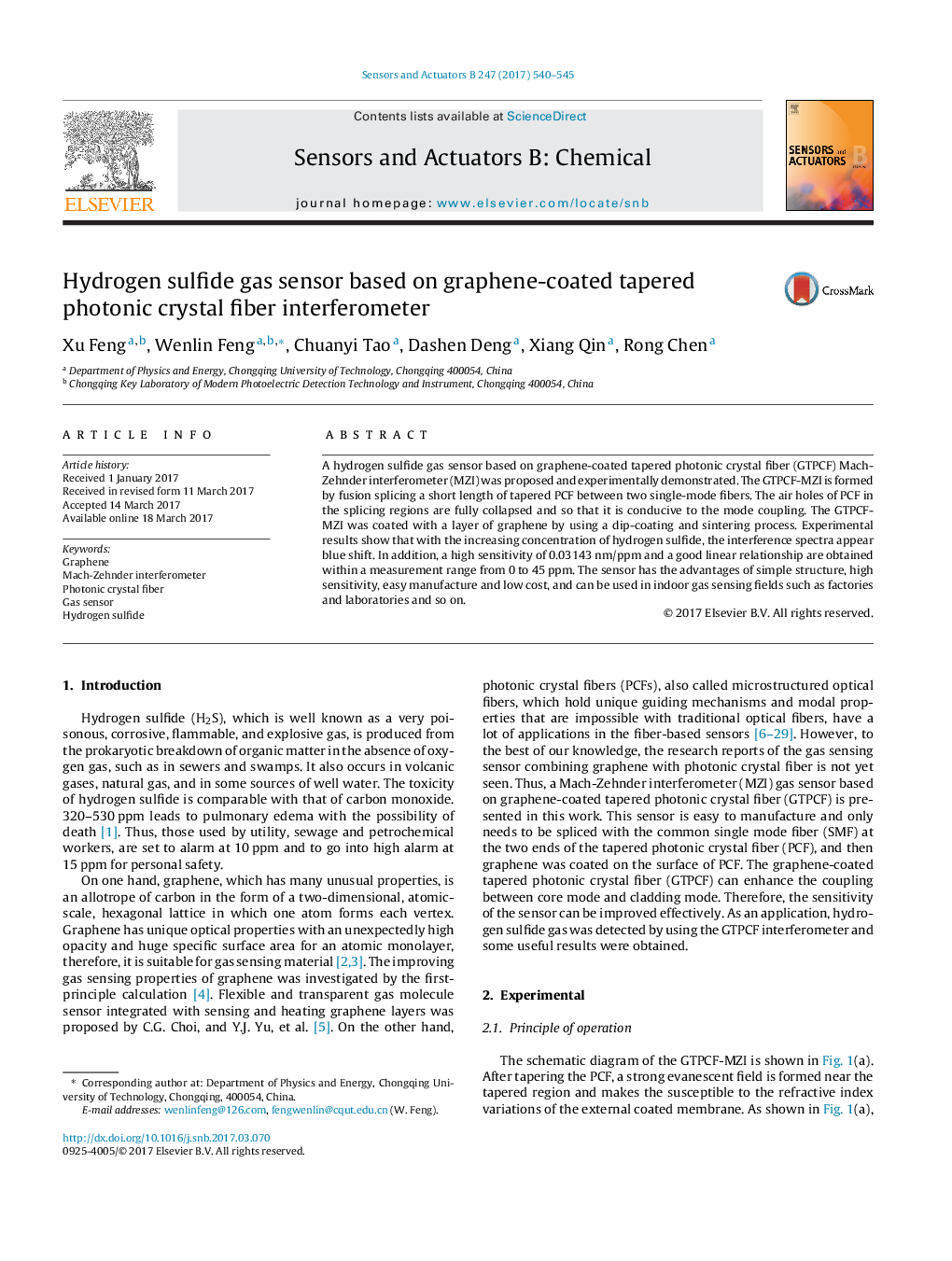| Article ID | Journal | Published Year | Pages | File Type |
|---|---|---|---|---|
| 5009405 | Sensors and Actuators B: Chemical | 2017 | 6 Pages |
â¢New material for selective hydrogen sulfide detection is proposed.â¢Graphene-coated tapered photonic crystal fiber Mach-Zehnder interferometer is developed.â¢With the increasing H2S concentration, the interference spectra appear blue shift.â¢A high sensitivity of 0.03143 nm/ppm and a good selectivity are obtained.
A hydrogen sulfide gas sensor based on graphene-coated tapered photonic crystal fiber (GTPCF) Mach-Zehnder interferometer (MZI) was proposed and experimentally demonstrated. The GTPCF-MZI is formed by fusion splicing a short length of tapered PCF between two single-mode fibers. The air holes of PCF in the splicing regions are fully collapsed and so that it is conducive to the mode coupling. The GTPCF-MZI was coated with a layer of graphene by using a dip-coating and sintering process. Experimental results show that with the increasing concentration of hydrogen sulfide, the interference spectra appear blue shift. In addition, a high sensitivity of 0.03143 nm/ppm and a good linear relationship are obtained within a measurement range from 0 to 45 ppm. The sensor has the advantages of simple structure, high sensitivity, easy manufacture and low cost, and can be used in indoor gas sensing fields such as factories and laboratories and so on.
Graphical abstractTransmission spectra of the GTPCF-MZI before and after coating with graphene.Download high-res image (130KB)Download full-size image
